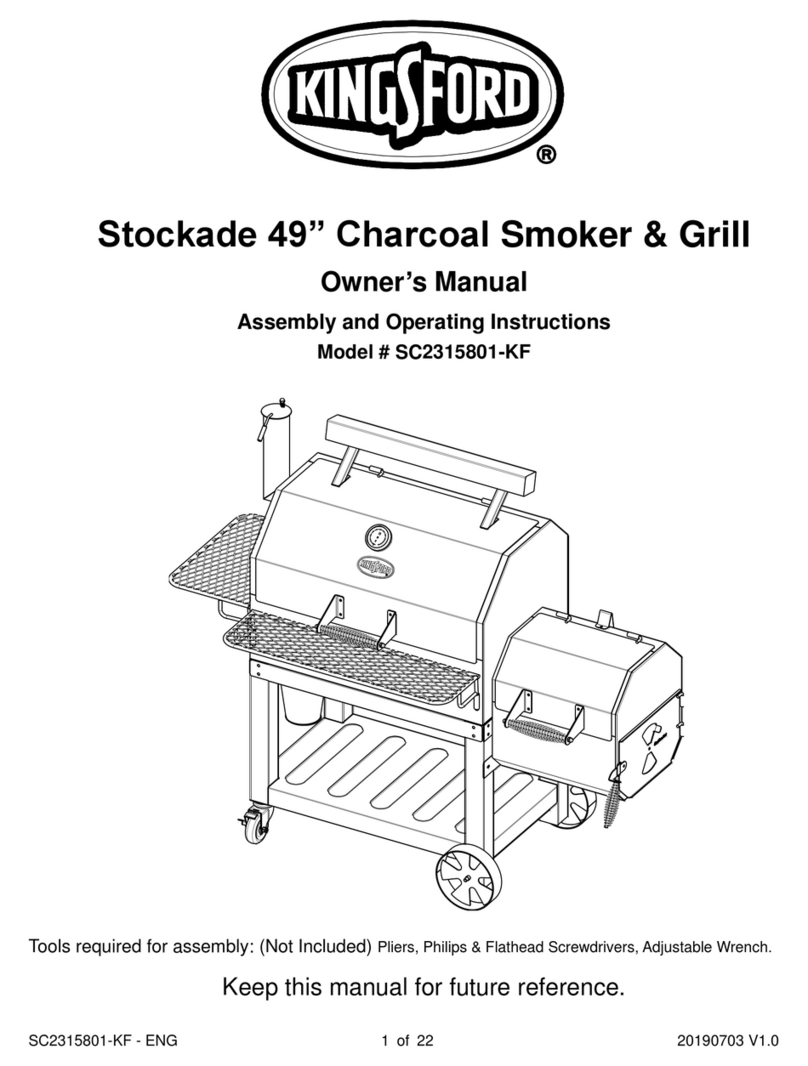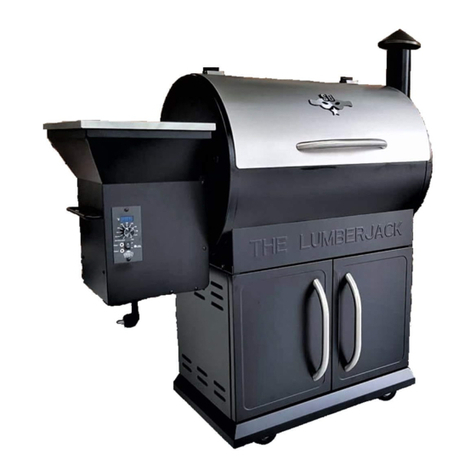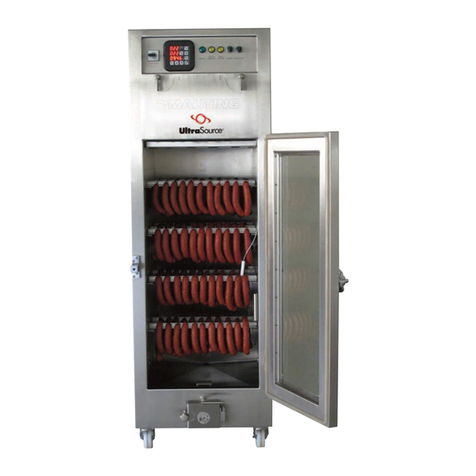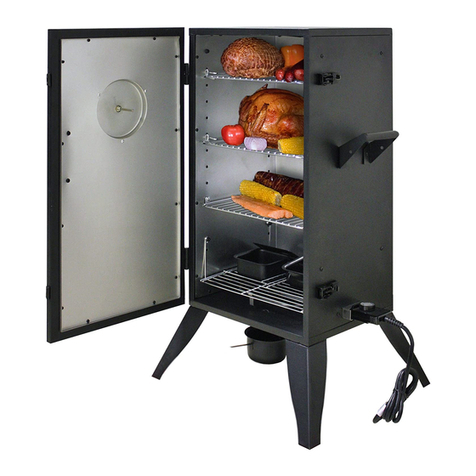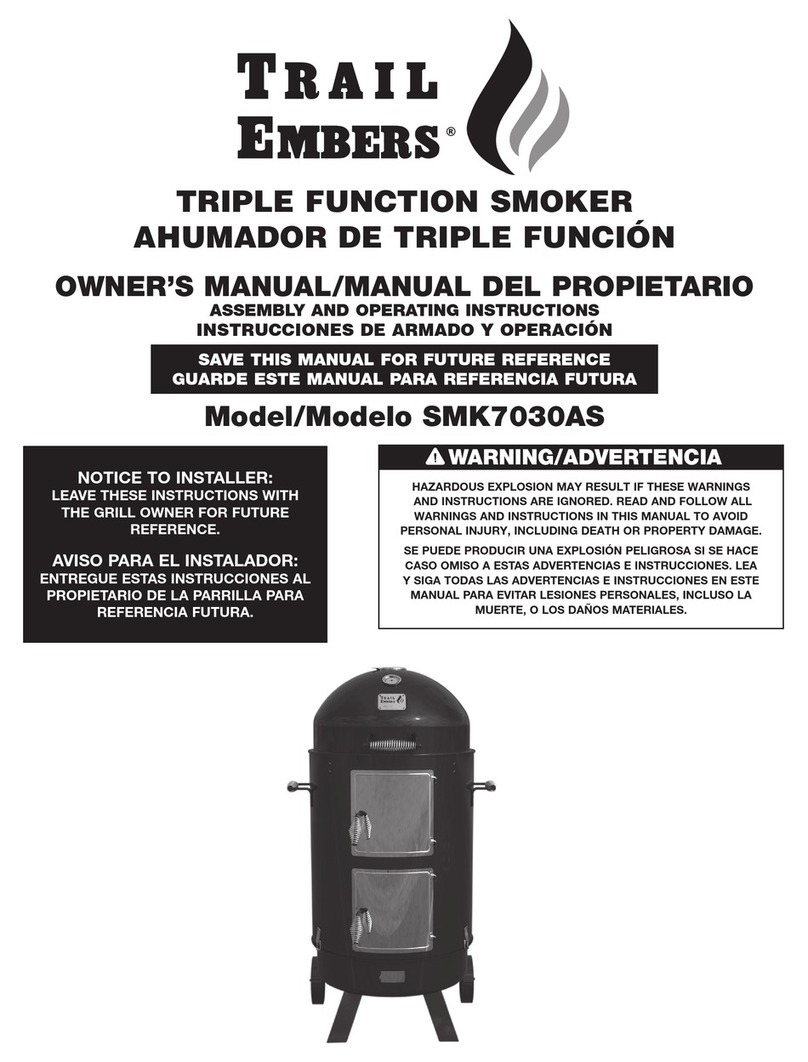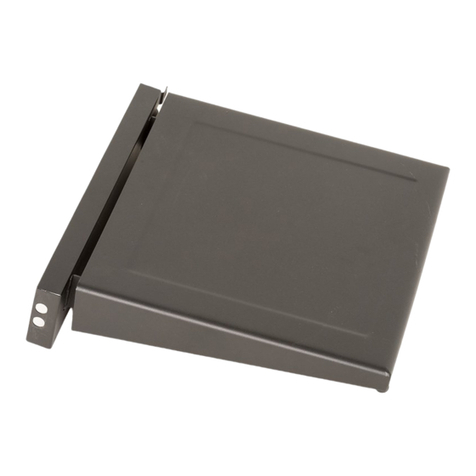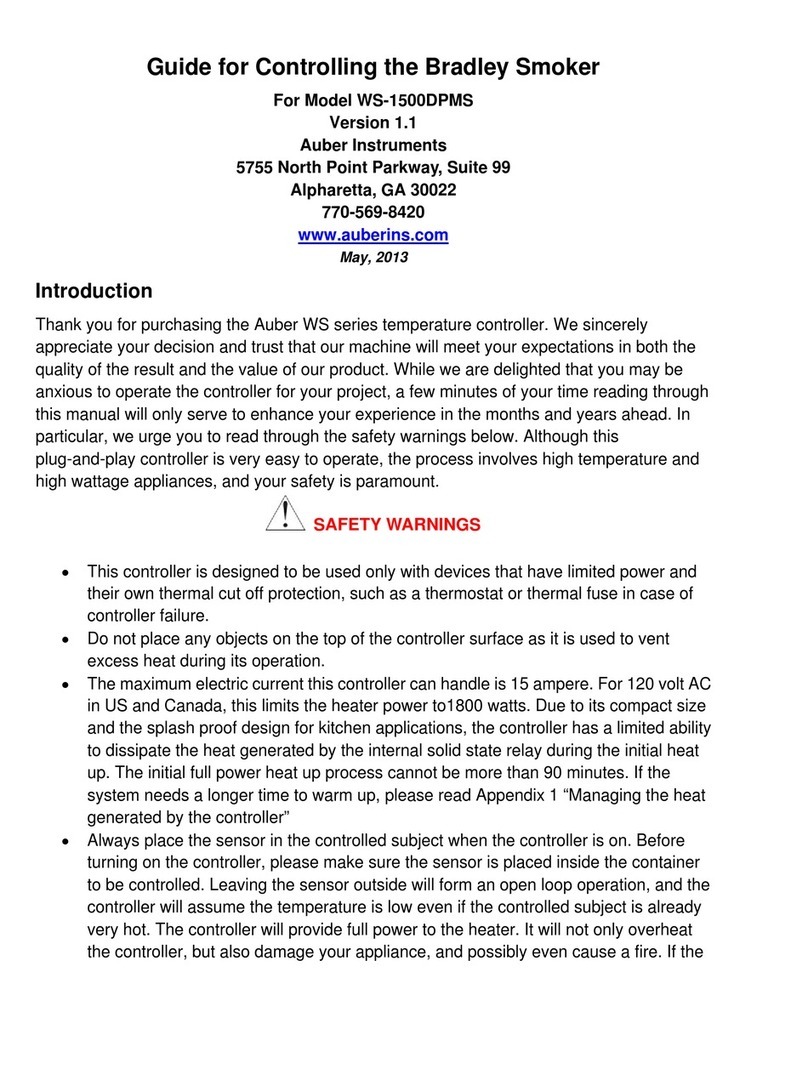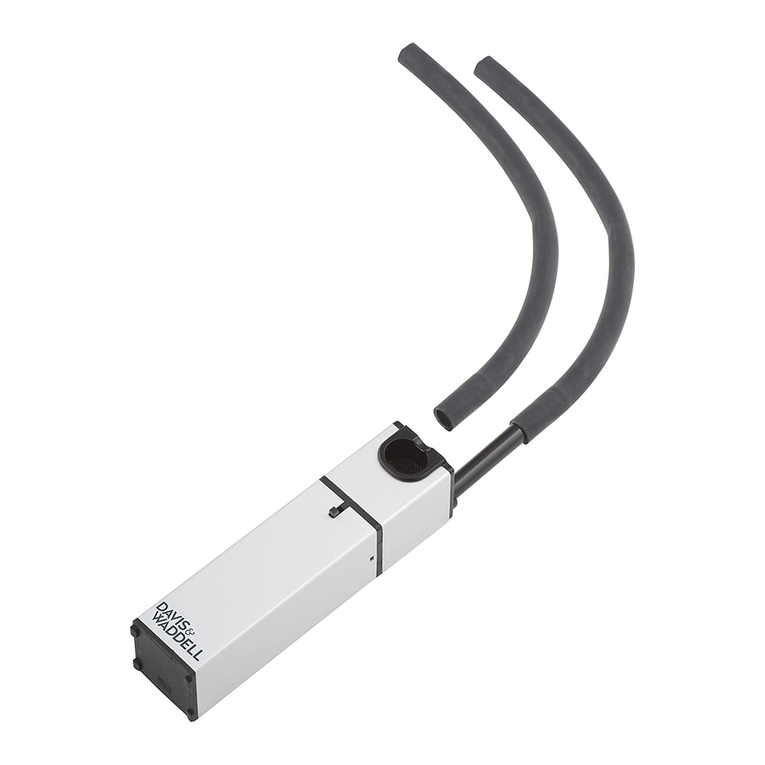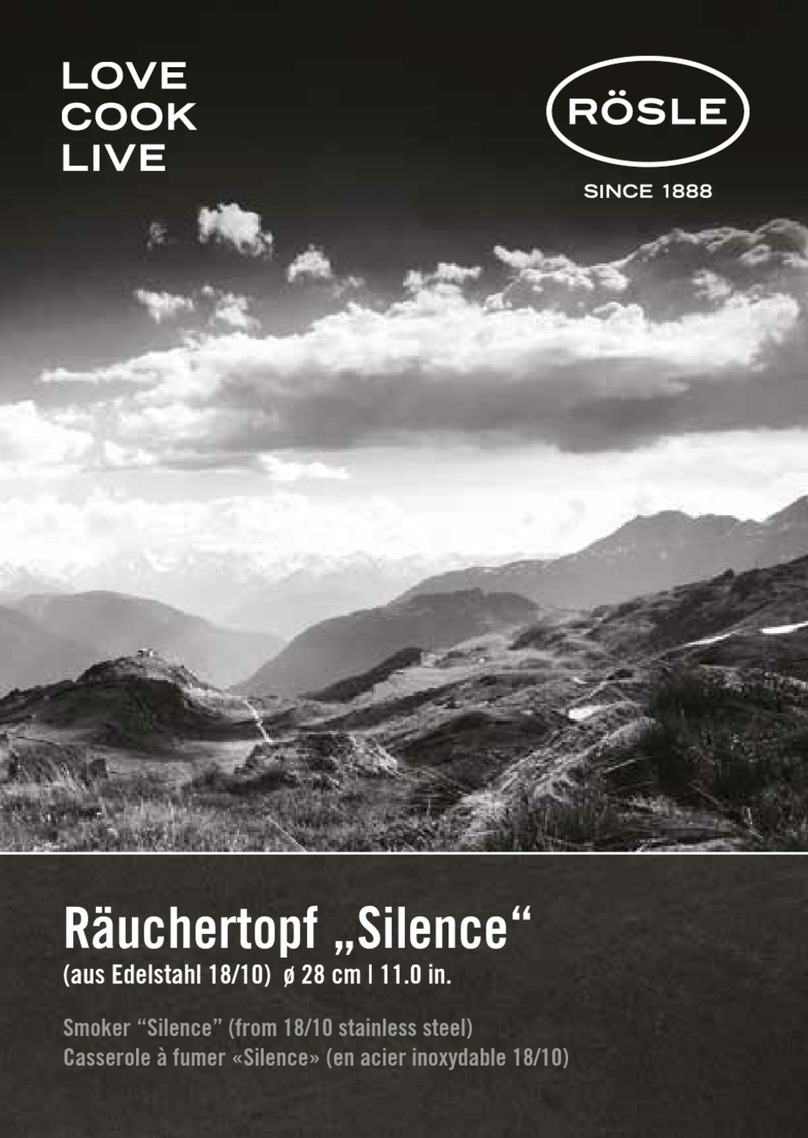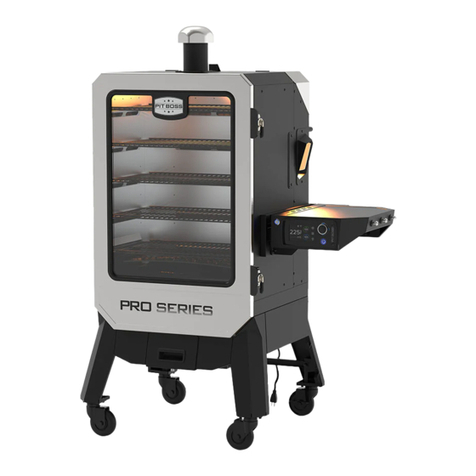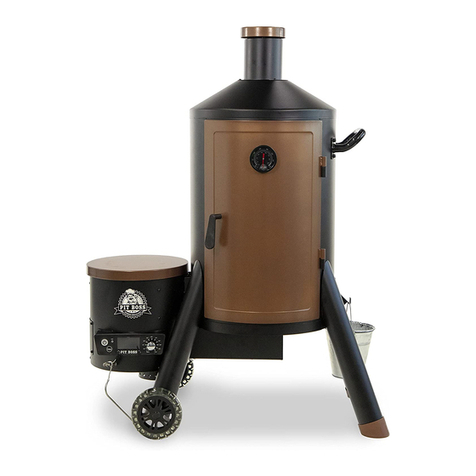
SMOKING GUIDE
Cooking times for beef are for the United States Department of Agriculture’s definition of
medium doneness unless otherwise noted. Cooking times listed are for foods that have
been completely thawed.
The cuts, thicknesses, weights, charcoal quantities and cooking times are meant to be
guidelines rather than hard and fast rules. Cooking times are affected by such factors as
altitude, wind, outside temperature, and desired doneness.
Different hardwoods will impart a variety of flavors. It is best to do some experimenting to
find the type of hardwood, or combination of hardwoods, that you like best. Start with the
lowest amount of wood chunks; more can be added to suit your own taste.
Experiment with different varieties of wood and amounts used.You can also add bay
leaves, garlic cloves, mint leaves, orange or lemon peel and various spices to charcoal
for added flavor. Keep a record of your experiments; it’s easy to forget what you did last
time.
WOOD TYPE CHARACTERISTICS FOOD MATCHES
Hickory Pungent, smoky, bacon-like flavor. Pork, chicken, beef, wild game, cheeses.
Pecan Rich and more subtle than hickory, but similar in taste.
Burns cool, so ideal for very low heat smoking.
Pork, chicken, lamb, fish, cheeses.
Mesquite Sweeter, more delicate flavor than hickory.
Tends to burn hot, so use carefully.
Most meats, especially beef. Most vegetables.
Alder Delicate flavor that enhances lighter meats. Salmon, swordfish, sturgeon, other fish.
Also good with chicken and pork.
Maple Mildly smoky, somewhat sweet flavor. Poultry, vegetables, ham.
Try mixing maple with corncobs for ham or bacon.
Cherry Slightly sweet, fruity smoke flavor. Poultry, game birds, pork.
Apple Slightly sweet but denser, fruity smoke flavor. Beef, poultry, game birds, pork (particularly ham).
Always avoid soft, resinous woods like pine, cedar, and aspen. WARNING: Never use wood that has been treated or exposed to chemicals.
POULTRY WEIGHT
CHARCOAL QUANTITY COOKING
TIME
WOOD
CHUNKS
INTERNAL TEMPERATURE /
DONENESS14.5" (37 CM)18.5" (47 CM) 22.5" (57 CM)
Chicken, whole 5 pounds 75 briquettes 100 briquettes 150 briquettes 2½ - 3½ hours 1 - 3 165 °F (74 °C) medium
Turkey, whole 8 - 12 pounds 75 briquettes 100 briquettes 150 briquettes 4 - 5 hours 2 - 4 165 °F (74 °C) medium
Turkey, whole 12 - 18 pounds 75 briquettes 100 briquettes 150 briquettes 8 - 10 hours 3 - 5 165 °F (74 °C) medium
Duck, whole 3 - 4 pounds 75 briquettes 100 briquettes 150 briquettes 2 - 2½ hours 3 - 4 180 °F (82 °C) medium
PORK WEIGHT
CHARCOAL QUANTITY COOKING
TIME
WOOD
CHUNKS
INTERNAL TEMPERATURE /
DONENESS14.5" (37 CM)18.5" (47 CM) 22.5" (57 CM)
Pork roast 4 - 8 pounds 75 briquettes 100 briquettes 150 briquettes 5 - 6 hours 3 - 5 170 °F (76 °C) well-done
Pork ribs Full grill 35 briquettes 50 briquettes 75 briquettes 4 - 6 hours 2 - 4 Meat begins to pull from bone
Ham, fresh whole 10 - 18 pounds 75 briquettes 100 briquettes 150 briquettes 8 - 12 hours 2 - 4 170 °F (76 °C) well-done
Pork shoulder 4 - 8 pounds 75 briquettes 100 briquettes 150 briquettes 8 - 12 hours 3 - 5 190 °F (88 °C) well-done
BEEF WEIGHT
CHARCOAL QUANTITY COOKING
TIME
WOOD
CHUNKS
INTERNAL TEMPERATURE /
DONENESS14.5" (37 CM)18.5" (47 CM) 22.5" (57 CM)
Beef brisket 5 - 6 pounds 75 briquettes 100 briquettes 150 briquettes 6 - 8 hours 3 - 5 190 °F (88 °C) well-done
Lamb roast,
venison 5 - 7 pounds 75 briquettes 100 briquettes 150 briquettes 5 - 6 hours 3 - 5 160 °F (71 °C) medium
Large cuts of game 7 - 9 pounds 75 briquettes 100 briquettes 150 briquettes 6 - 8 hours 3 - 5 170 °F (76 °C) well-done
Beef ribs Full grill 35 briquettes 50 briquettes 75 briquettes 6 - 7 hours 2 - 4 160 °F (71 °C) well-done
FISH WEIGHT
CHARCOAL QUANTITY COOKING
TIME
WOOD
CHUNKS
INTERNAL TEMPERATURE /
DONENESS14.5" (37 CM)18.5" (47 CM) 22.5" (57 CM)
Whole, small Full grill 35 briquettes 50 briquettes 75 briquettes 1 - 1½ hours 2 - 4 Flakes with fork
Whole, large 3 - 6 pounds 35 briquettes 50 briquettes 75 briquettes 3 - 4 hours 2 - 4 Flakes with fork
Lobster and shrimp Full grill 35 briquettes 50 briquettes 75 briquettes 1 hour 2 - 4 Firm and pink


